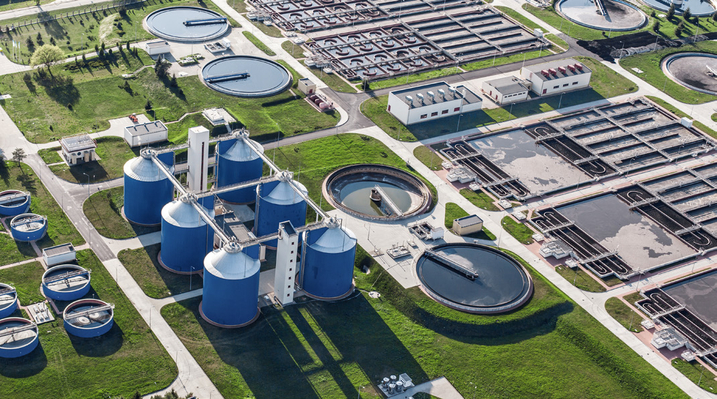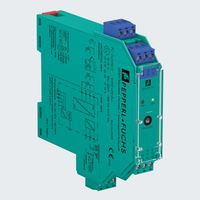Energy Generation Processes in Wastewater Treatment Plants

Application
The sludge produced in the primary and secondary sedimentation basins is heated in a digestion tower to a temperature of between 35 °C and 40 °C. This airtight process, which lasts for up to 25 days, causes the sludge to decompose. Anaerobic bacteria break down the sludge into fermentation gas, water, and sapropel. The gas mixture created consists of around 70 % methane and 30 % carbon dioxide. In the gas cleaning plant, methane is extracted from hydrogen sulfide through a chemical reaction between the gas and cleaning solution. The gas is either burned off or temporarily placed in a storage tank for energy generation before being transported to a power plant or fed into a public gas grid.
Goal
In order to optimize the anaerobic decomposition of sludge in the digestion tower, it is essential that temperature and pressure are monitored reliably. In addition, the formation and removal of foam by an agitator is monitored. This prevents the plant from being flooded with foam and stops pipe blockages while also increasing the gas yield. The quality of the gas produced is analyzed so that any fluctuations in the heating value can be detected. This data indicates possible overheating in the pumps and may be used to regulate the combined heat and power plant located downstream. The pressure and fill level in the gas storage tank is monitored to prevent any overload in the tank and conduits and to stop gas from escaping.
Solution

The K-System portfolio offers interface components for all signal types and applications.
Since digestion towers and their secondary systems are essentially explosion-hazardous areas, K-System isolated barriers can be used as interface modules. Transmitter power supplies report the level and pressure measurements in the digestion tower to the control panel while temperature converters report analog temperature values. Frequency converters in conjunction with discrete sensors record and transfer motor data. Gas analyzers transfer their results to the control panel via signal converters. The fill level and pressure measurements in the gas storage tank are transmitted in the same manner.
Benefits
The K-System portfolio offers interface components for all signal types and applications—ranging from common signal conditioner to highly functional Ex components. The Power Rail powers the devices and provides a collective error message. It consists of a DIN rail with an insert component. The DIN rail mounting reduces wiring costs by making it easy to plug in the modules. In addition, the K-System has many international approvals up to SIL 3 for all signal types.
At a Glance
- The wastewater treatment plant generates energy from sludge in the digestion tower. A byproduct of the digestion tower, fermentation gas is stored and used in various ways.
- Analog values such as the pressure and temperature in the digestion tower and in the gas storage tank, as well as the gas analysis data, are transmitted to the control panel by signal converters or transmitter power supplies.
- Frequency converters monitor the rotational speed of the agitators that remove foam.








 +47 3557 3800
+47 3557 3800